Caravan tyres aren’t cheap, nor are they something that should be taken for granted. So how do you choose what’s right for your setup? For starters, it helps if you understand tyre types and markings. Let’s look at caravan tyres in more detail so you’ll be in a better position when making that next tyre purchase.
RV/CARAVAN WHEELS
Reputable RV manufacturers will use a wheel rim that’s designed specifically for RVs or trailers. Unlike the tow vehicle, which distributes its load over four wheels, the tyres on a single-axle RV with two wheels have their work cut out. When you add differing suspension systems into the mix, it soon becomes apparent why not all vehicle wheels would be suitable for an RV. Before fitting any vehicle wheels to your RV, check with the wheel manufacturer to ensure they’re suitable for an RV and the large load being placed on them.
RV/CARAVAN TYRES
While there aren’t tyres available that are specifically manufactured for use on caravans, there are tyres available that specific to trailers. These tyres come in a range of sizes and configurations, and they’re designed to carry heavy loads. With tyres and trailers, the tyre’s load-carrying capability forms part of the overall suspension system. The tyre type and its inflation rates will be specified by the RV chassis suspension engineer.
WHAT’S DIFFERENT?
Surprisingly, there are many differences between vehicle tyres and the tyres found on caravans/trailers.
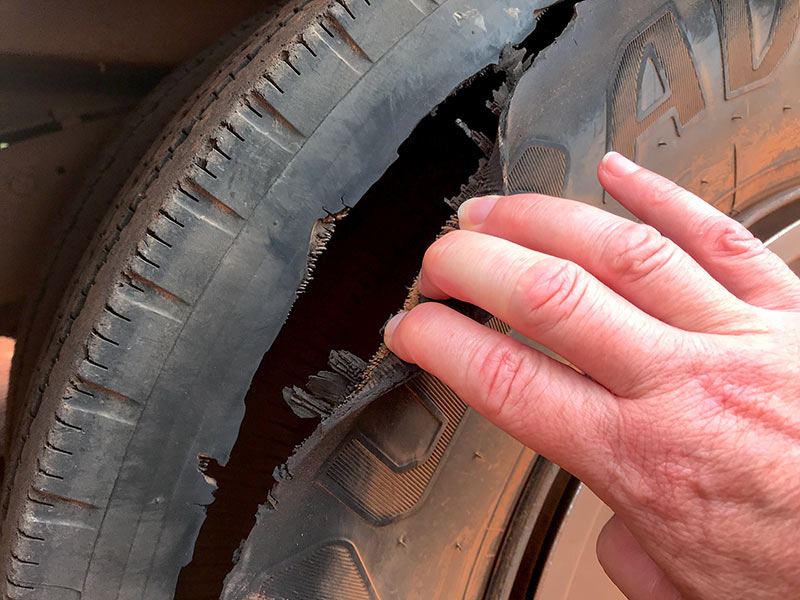
One of these differences is that vehicle tyres have to contend with higher cornering forces and there’s a requirement that they be quieter for road noise, too. They’re also generally ‘softer’ since they’re matched with a sophisticated suspension system on the vehicle. However, these tyres also need to meet a specific Noise, Vibration and Hardness rating.
Most caravan tyres don’t have the luxury of being supported by a suspension system that’s of the same sophistication as that found on the tow vehicle. When correctly inflated, there is therefore an expectation that the RV tyre will absorb some of the road’s harshness.
In many cases, caravan tyres aren’t subjected to the same kilometres usually travelled by a vehicle’s tyres. This means tread wear rates can be low.
However, RVs that are stored for long periods leave their tyres holding heavy loads. This applies pressure and straining to sidewalls and tread surfaces, especially the areas in contact with the ground surface.
FINDING THE SPECS
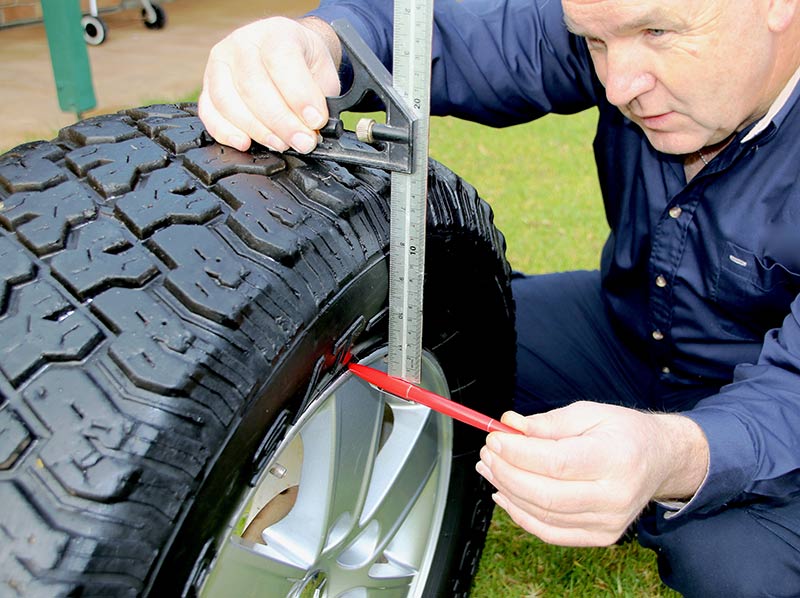
A newer RV should come with a tyre placard or handbook detailing the recommended tyre types and pressures. You’ll want to regularly check your van’s tyre pressures as well since you can’t see or feel the effects of under-inflated tyres quite as easily as you can with the tow vehicle, particularly if you’re fairly new to towing. Remember to check the spare wheels as well.
TYRE PRESSURE MONITORING SYSTEMS
These devices provide the driver with real-time tyre pressures and their heat rates. Simply put, the system works by sending a signal from the tyre to a monitor/display inside the vehicle.
Whether it’s a tyre with a fast leak or a slow leak, both can be detected by setting alarm values to alert the driver. Being armed with this information means you can observe the changes and take corrective measures. They’re great insurance and well worth the money spent.
SIDEWALL MARKINGS
It may come as a surprise, but you can’t assume when buying a new van that the caravan tyres are all the same age. Tyres are manufactured in large supply runs and may have been stored for long periods before being used.
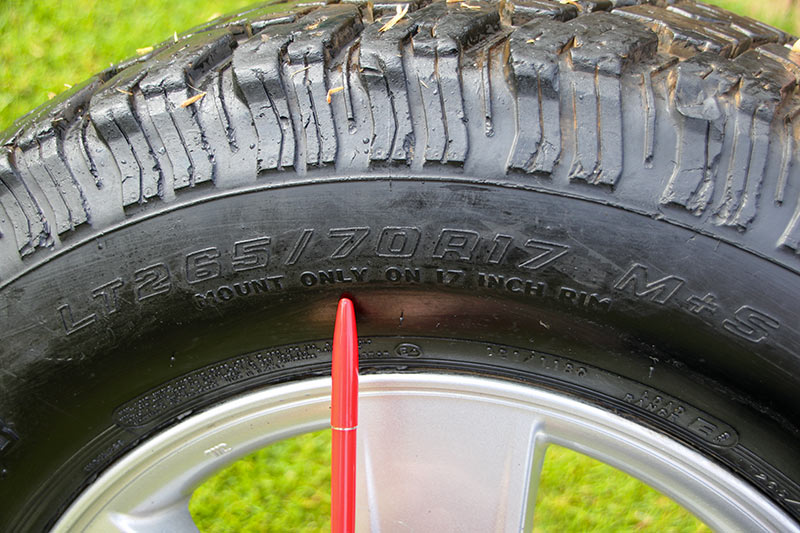
Provided they have been stored in suitable conditions (temperature, humidity and sunlight), then they’ll be okay. As you’ll never be able to confirm how a tyre has been stored, at the very least you can look to see the age of the tyre on its sidewall.
Taking an average sized tyre used within the industry, the information found on its sidewall may read something like “A/T LT 235/75R15 104R”. What does all this mean? Most tyres will have a great deal more information marked on them, but let’s focus on these key markings…
| TYRE SIZE | SERVICE DESCRIPTION | |||||
| Construction type | Section width | Aspect ratio | Casing construction | Rim diameter | Load index | Speed rating |
| AT LT | 235 | 75 | R | 15 | 104 | R |
Construction Type
Manufacturers will use abbreviations to describe the characteristics of a tyre and its construction, e.g. H/T (highway terrain) or A/T (all terrain). There will often be other letters such as LT (Light Truck construction) or XL (this can indicate that the tyre has extra load carrying characteristics). Refer to tyre manufacture charts for further details.
Section Width
The tyre is measured in millimetres from the widest points of the tyre, sidewall to sidewall.
Aspect Ratio
This is the dimensional relationship of the section height compared to the section width expressed as a percentage. Basically, it’s the height of the tyre sidewall expressed as Overall Diameter/Rim Diameter x 100.
Casing Construction
The R in this case designates the tyre is of a radial casing construction.
Rim Diameter
This is the size of the rim diameter measured in inches.
Load Index
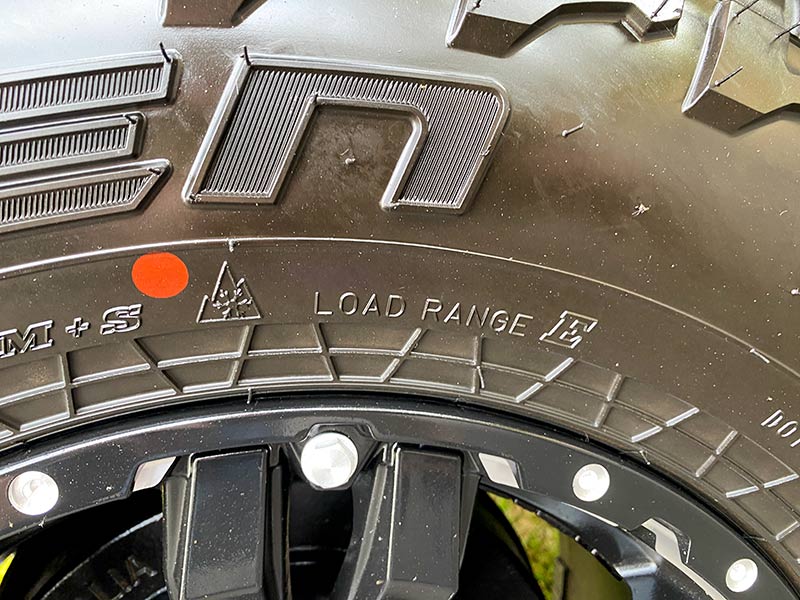
The load index is a number indicating the tyre’s maximum load capacity.
Speed Rating
Denotes the maximum speed for which the tyre is rated.
SECONDHAND VANS
When you buy a secondhand van, it’s difficult to know whether it has its original tyres or if they’ve been replaced. Your best bet is to check each tyre’s manufacture date to determine its age.
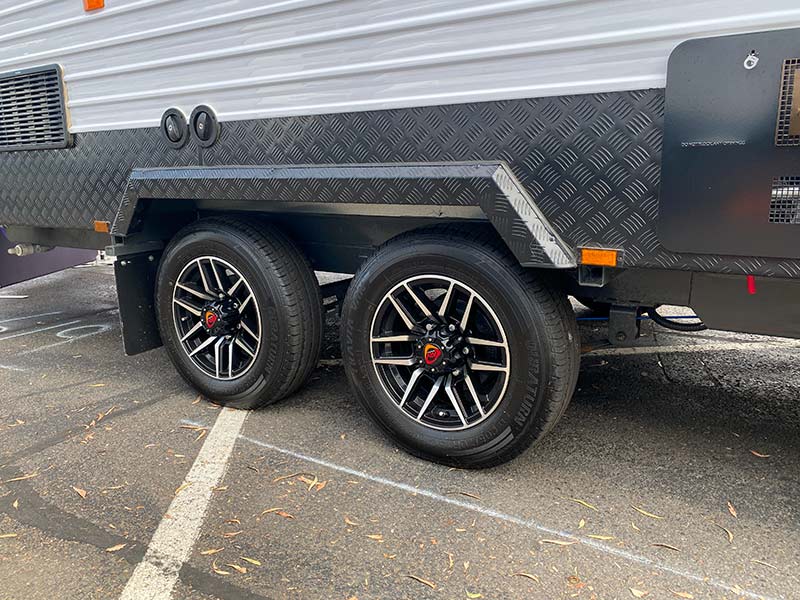
While the RV may appear to be in tip-top condition, things like UV, a lack of tyre rotation and under-inflation, can cause tyre damage. Checking the spare wheel, including whether it’s a different brand, can tell a story. Be aware that tyres that haven’t been well cared for are likely to let you down without any prior warning. That’s why it’s so important to check them. Think about replacing them if you have any doubt, particularly if they’re more than about six years old.
TYRE PRESSURES
Both durability and safety will be affected when you run incorrect tyre pressures on a loaded RV. Drive with incorrect pressures may affect your RV’s handling. It also places an increased loading on the suspension, affects braking efficiency, and increases fuel usage. So it’s important to know your RV’s weight and the loads on the axles to ascertain what’s expected from your tyres.
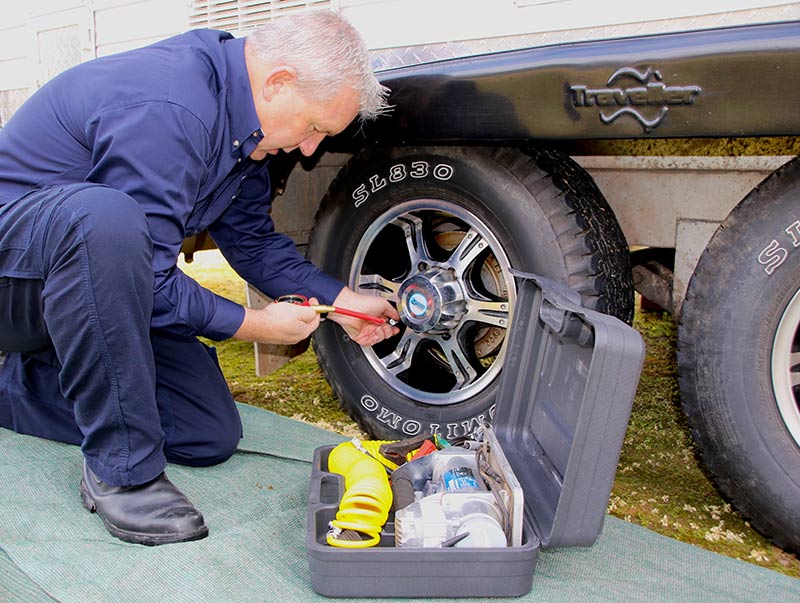
The chances are, you’ll be at the top end of the scale. Tyres have an optimum pressure range that’s labelled on the sidewall. Further load-carrying pressure information can be found in the tyre manufacturer’s reference guide.
WHEN TO REPLACE CARAVAN TYRES
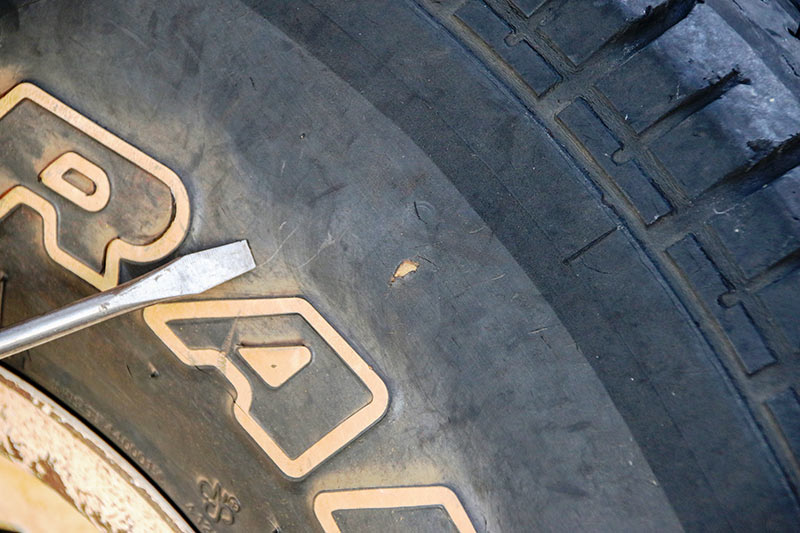
1. It goes without saying, but replace your caravan tyres if any are worn down to the legal minimum levels.
2. If the sidewall has been damaged (tear or bulge), it’s time to replace them.
3. Chipping or chunks missing from the tread pattern.
4. Signs of uneven wear (this also warrants an investigation as to why this is occurring).
5. Don’t forget to inspect the condition of valves for marking or slow leaks.
6. Replace your tyres if they are between five and seven years old (as a guide).
SUMMING UP
Your RV’s tyres are what keep you rolling, but they’re not something you can simply set and forget. By understanding what to look for when selecting and maintaining your tyres puts you in the driver’s seat when the time comes for negotiating a new set for your RV.





